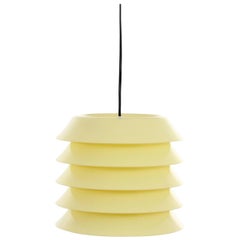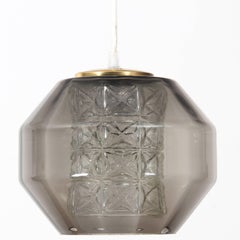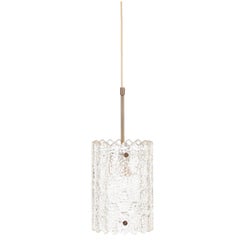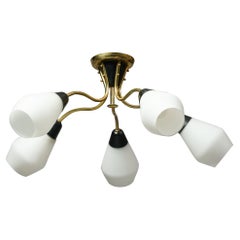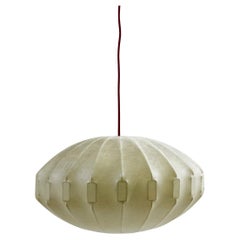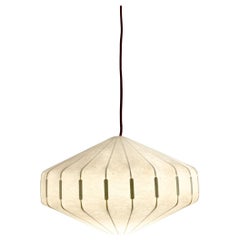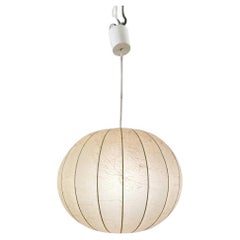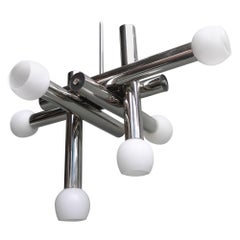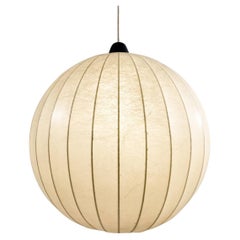Mid Century Modern Pendant
Vintage 1970s Scandinavian Lanterns
Plastic
Vintage 1960s Swedish Chandeliers and Pendants
Glass
Vintage 1960s Swedish Chandeliers and Pendants
Crystal, Brass
Vintage 1950s Finnish Mid-Century Modern Chandeliers and Pendants
Brass
Vintage 1960s Italian Mid-Century Modern Chandeliers and Pendants
Resin
Vintage 1960s Italian Mid-Century Modern Chandeliers and Pendants
Resin
Vintage 1960s Italian Mid-Century Modern Chandeliers and Pendants
Paper
Vintage 1960s Italian Mid-Century Modern Chandeliers and Pendants
Chrome
Vintage 1960s Chandeliers and Pendants
Resin
Vintage 1960s Italian Chandeliers and Pendants
Resin
Vintage 1960s Italian Chandeliers and Pendants
Resin
Vintage 1960s Swedish Chandeliers and Pendants
Brass
Vintage 1960s Swedish Chandeliers and Pendants
Glass
Vintage 1960s Danish Chandeliers and Pendants
Brass, Steel
Vintage 1960s Mid-Century Modern Chandeliers and Pendants
Brass
Vintage 1960s Swiss Mid-Century Modern Chandeliers and Pendants
Metal
20th Century Danish Mid-Century Modern Chandeliers and Pendants
Smoked Glass, Teak
Mid-20th Century Italian Mid-Century Modern Chandeliers and Pendants
Glass
Vintage 1960s Italian Mid-Century Modern Chandeliers and Pendants
Murano Glass
Vintage 1950s Scandinavian Scandinavian Modern Chandeliers and Pendants
Brass
Vintage 1960s German Mid-Century Modern Chandeliers and Pendants
Aluminum
Vintage 1960s Italian Mid-Century Modern Chandeliers and Pendants
Wicker
Vintage 1950s Mid-Century Modern Chandeliers and Pendants
Metal
Vintage 1960s German Mid-Century Modern Chandeliers and Pendants
Metal
Vintage 1950s Scandinavian Mid-Century Modern Chandeliers and Pendants
Brass, Aluminum
Vintage 1960s German Mid-Century Modern Chandeliers and Pendants
Aluminum, Metal
Vintage 1970s Italian Mid-Century Modern Chandeliers and Pendants
Chrome, Metal
Vintage 1960s German Mid-Century Modern Chandeliers and Pendants
Brass
Vintage 1970s Italian Mid-Century Modern Chandeliers and Pendants
Steel
Vintage 1950s German Mid-Century Modern Chandeliers and Pendants
Brass, Metal
Vintage 1960s Scandinavian Scandinavian Modern Chandeliers and Pendants
Copper
Vintage 1970s German Mid-Century Modern Chandeliers and Pendants
Aluminum, Brass
Vintage 1970s Italian Mid-Century Modern Chandeliers and Pendants
Metal, Steel
Mid-20th Century Mid-Century Modern Chandeliers and Pendants
Glass, Wood, Milk Glass, Teak
Vintage 1960s German Mid-Century Modern Chandeliers and Pendants
Aluminum
Mid-20th Century Swedish Mid-Century Modern Chandeliers and Pendants
Plastic
Mid-20th Century Swedish Mid-Century Modern Chandeliers and Pendants
Plastic, Oak
Vintage 1950s German Mid-Century Modern Chandeliers and Pendants
Opaline Glass
Vintage 1960s German Mid-Century Modern Chandeliers and Pendants
Aluminum, Brass
Vintage 1970s German Mid-Century Modern Chandeliers and Pendants
Aluminum
Vintage 1960s Italian Mid-Century Modern Chandeliers and Pendants
Metal, Aluminum
Vintage 1950s German Mid-Century Modern Chandeliers and Pendants
Glass, Opaline Glass
Vintage 1960s Italian Mid-Century Modern Chandeliers and Pendants
Metal
Vintage 1960s German Mid-Century Modern Chandeliers and Pendants
Plastic
Vintage 1970s Italian Mid-Century Modern Chandeliers and Pendants
Metal
Vintage 1950s German Mid-Century Modern Chandeliers and Pendants
Brass, Chrome
Vintage 1970s Austrian Mid-Century Modern Chandeliers and Pendants
Metal
Vintage 1950s German Mid-Century Modern Chandeliers and Pendants
Glass, Opaline Glass
Vintage 1970s American Mid-Century Modern Chandeliers and Pendants
Metal, Chrome
Vintage 1950s German Mid-Century Modern Chandeliers and Pendants
Aluminum
Mid-20th Century Swedish Mid-Century Modern Chandeliers and Pendants
Plastic, Wood
Vintage 1960s Italian Mid-Century Modern Chandeliers and Pendants
Plastic
Early 2000s American Mid-Century Modern Chandeliers and Pendants
Brass
Vintage 1950s Swedish Chandeliers and Pendants
Glass
20th Century Italian Mid-Century Modern Chandeliers and Pendants
Metal
1990s American Late Victorian Chandeliers and Pendants
Art Glass
2010s American Mid-Century Modern Chandeliers and Pendants
Wrought Iron
1990s North American Mid-Century Modern Chandeliers and Pendants
Brass
Vintage 1950s Danish Chandeliers and Pendants
Opaline Glass
Vintage 1950s German Mid-Century Modern Chandeliers and Pendants
Aluminum, Brass
- 1
- ...
Mid Century Modern Pendant For Sale on 1stDibs
How Much is a Mid Century Modern Pendant?
A Close Look at Mid-century Modern Furniture
Organically shaped, clean-lined and elegantly simple are three terms that well describe vintage mid-century modern furniture. The style, which emerged primarily in the years following World War II, is characterized by pieces that were conceived and made in an energetic, optimistic spirit by creators who believed that good design was an essential part of good living.
ORIGINS OF MID-CENTURY MODERN FURNITURE DESIGN
- Emerged during the mid-20th century
- Informed by European modernism, Bauhaus, International style, Scandinavian modernism and Frank Lloyd Wright’s architecture
- A heyday of innovation in postwar America
- Experimentation with new ideas, new materials and new forms flourished in Scandinavia, Italy, the former Czechoslovakia and elsewhere in Europe
CHARACTERISTICS OF MID-CENTURY MODERN FURNITURE DESIGN
- Simplicity, organic forms, clean lines
- A blend of neutral and bold Pop art colors
- Use of natural and man-made materials — alluring woods such as teak, rosewood and oak; steel, fiberglass and molded plywood
- Light-filled spaces with colorful upholstery
- Glass walls and an emphasis on the outdoors
- Promotion of functionality
MID-CENTURY MODERN FURNITURE DESIGNERS TO KNOW
- Charles and Ray Eames
- Eero Saarinen
- Milo Baughman
- Florence Knoll
- Harry Bertoia
- Isamu Noguchi
- George Nelson
- Danish modernists Hans Wegner and Arne Jacobsen, whose emphasis on natural materials and craftsmanship influenced American designers and vice versa
ICONIC MID-CENTURY MODERN FURNITURE DESIGNS
- Eames lounge chair
- Nelson daybed
- Florence Knoll sofa
- Egg chair
- Womb chair
- Noguchi coffee table
- Barcelona chair
VINTAGE MID-CENTURY MODERN FURNITURE ON 1STDIBS
The mid-century modern era saw leagues of postwar American architects and designers animated by new ideas and new technology. The lean, functionalist International-style architecture of Le Corbusier and Bauhaus eminences Ludwig Mies van der Rohe and Walter Gropius had been promoted in the United States during the 1930s by Philip Johnson and others. New building techniques, such as “post-and-beam” construction, allowed the International-style schemes to be realized on a small scale in open-plan houses with long walls of glass.
Materials developed for wartime use became available for domestic goods and were incorporated into mid-century modern furniture designs. Charles and Ray Eames and Eero Saarinen, who had experimented extensively with molded plywood, eagerly embraced fiberglass for pieces such as the La Chaise and the Womb chair, respectively.
Architect, writer and designer George Nelson created with his team shades for the Bubble lamp using a new translucent polymer skin and, as design director at Herman Miller, recruited the Eameses, Alexander Girard and others for projects at the legendary Michigan furniture manufacturer.
Harry Bertoia and Isamu Noguchi devised chairs and tables built of wire mesh and wire struts. Materials were repurposed too: The Danish-born designer Jens Risom created a line of chairs using surplus parachute straps for webbed seats and backrests.
The Risom lounge chair was among the first pieces of furniture commissioned and produced by celebrated manufacturer Knoll, a chief influencer in the rise of modern design in the United States, thanks to the work of Florence Knoll, the pioneering architect and designer who made the firm a leader in its field. The seating that Knoll created for office spaces — as well as pieces designed by Florence initially for commercial clients — soon became desirable for the home.
As the demand for casual, uncluttered furnishings grew, more mid-century furniture designers caught the spirit.
Classically oriented creators such as Edward Wormley, house designer for Dunbar Inc., offered such pieces as the sinuous Listen to Me chaise; the British expatriate T.H. Robsjohn-Gibbings switched gears, creating items such as the tiered, biomorphic Mesa table. There were Young Turks such as Paul McCobb, who designed holistic groups of sleek, blond wood furniture, and Milo Baughman, who espoused a West Coast aesthetic in minimalist teak dining tables and lushly upholstered chairs and sofas with angular steel frames.
Generations turn over, and mid-century modern remains arguably the most popular style going. As the collection of vintage mid-century modern chairs, dressers, coffee tables and other furniture for the living room, dining room, bedroom and elsewhere on 1stDibs demonstrates, this period saw one of the most delightful and dramatic flowerings of creativity in design history.
Finding the Right Chandeliers-pendant-lights for You
Chandeliers — simple in form, inspired by candelabras and originally made of wood or iron — first made an appearance in early churches. For those wealthy enough to afford them for their homes in the medieval period, a chandelier's suspended lights likely exuded imminent danger, as lit candles served as the light source for fixtures of the era. Things have thankfully changed since then, and antique chandeliers and pendant lights are popular in many interiors today.
While gas lighting during the late 18th century represented an upgrade for chandeliers — and gas lamps would long inspire Danish architect and pioneering modernist lighting designer Poul Henningsen — it would eventually be replaced with the familiar electric lighting of today.
The key difference between a pendant light and a chandelier is that a pendant incorporates only a single bulb into its design. Don’t mistake this for simplicity, however. An Art Deco–styled homage to Sputnik from Murano glass artisans Giovanni Dalla Fina, with handcrafted decorative elements supported by a chrome frame, is just one stunning example of the elaborate engineering that can be incorporated into every component of a chandelier. (Note: there is more than one lighting fixture that shares its name with the iconic mid-century-era satellite — see Gino Sarfatti’s design too.)
Chandeliers have evolved over time, but their classic elegance has remained unchanged.
Not only will the right chandelier prove impressive in a given room, but it can also offer a certain sense of practicality. These fixtures can easily illuminate an entire space, while their elevated position prevents them from creating glare or straining one’s eyes.
Certain materials, like glass, can complement naturally lit settings without stealing the show. Brass, on the other hand, can introduce an alluring, warm glow. While LEDs have earned a bad reputation for their perceived harsh bluish lights and a loss of brightness over their life span, the right design choices can help harness their lighting potential and create the perfect mood. A careful approach to lighting can transform your room into a peaceful and cozy nook, ideal for napping, reading or working.
For midsize spaces, a wall light or sconce can pull the room together and get the lighting job done. Perforated steel rings underneath five bands of handspun aluminum support a rich diffusion of light within Alvar Aalto's Beehive pendant light, but if you’re looking to brighten a more modest room, perhaps a minimalist solution is what you’re after. The mid-century modern furniture designer Charlotte Perriand devised her CP-1 wall lamps in the 1960s, in which a repositioning of sheet-metal plates can redirect light as needed.
The versatility and variability of these lighting staples mean that, when it comes to finding something like the perfect chandelier, you’ll never be left hanging. From the natural world-inspired designs of the Art Nouveau era to the classic beauty of Paul Ferrante's fixtures, there is a style for every room.
With designs for pendant lights and chandeliers across eras, colors and materials, you’ll never run out of options to explore on 1stDibs — shop a collection today that includes antique Art Deco chandeliers, Stilnovo chandeliers, Baccarat chandeliers and more.
- 1stDibs ExpertFebruary 27, 2024The difference between mid-century and mid-century modern comes down to specificity. When it comes to furniture and architecture, for example, mid-century refers to works that emerged during the middle of the 20th century, usually between 1950 and 1970. The more specific descriptor, mid-century modern, is used to refer to a particular style of design that emphasizes simplicity, organic forms and clean lines. Mid-century modern furniture designers generally drew on the architectural work of Frank Lloyd Wright, Bauhaus design, Scandinavian modernism and more. Any piece of furniture produced during the 1950s and ’60s can be referred to as mid-century, but only those with specific characteristics are mid-century modern. That said, when enthusiasts of furniture and architecture use the shorter of the two phrases, they may indeed be referring to modernist works created during that period in history. On 1stDibs, find a wide variety of mid-century modern furniture.
- Is Mondrian mid century modern?1 Answer1stDibs ExpertApril 5, 2022Yes, Mondrian’s art is believed to be one of the great inspirations for the mid-century modern approach to minimalism. His artworks were not just a departure from figurative works, but a new look at abstract art as well. On 1stDibs, find a variety of original artwork from top artists.
- Is mid-century modern timeless?1 Answer1stDibs ExpertApril 22, 2024Yes, mid-century modern is timeless, in the opinion of many experts. Many characteristics of furniture and decorative accents produced in this style remain popular today. Among them are silhouettes marked by organic forms and clean lines, the promotion of functionality and the use of natural materials like teak, rosewood and oak and synthetic materials such as steel, fiberglass and molded plywood. On 1stDibs, shop a large collection of mid-century modern furniture.
- Is rattan mid-century modern?1 Answer1stDibs ExpertMarch 13, 2024Yes, some rattan is mid-century modern. Designers of the mid-century modern movement often preferred to use natural materials, including rattan, in their designs. However, not all rattan furniture was made during this period. Rattan was also a popular material for furniture produced during the Victorian era and continues to be used to produce furniture today. Shop a wide range of rattan furniture on 1stDibs.
- 1stDibs ExpertFebruary 22, 2021Most experts agree that mid-century modern correlates specifically to the years following World War II. It has grown in popularity in the decades since, particularly due to the media and cultural institutions that have promoted the truly innovative era of design. Not only did the MoMA promote modern furniture, but pieces are prominently visible on the set of very popular television shows such as Mad Men. Shop a wide and beautiful range of mid-century modern furniture on 1stDibs.
- Is Eames mid-century modern?1 Answer1stDibs ExpertFebruary 13, 2024Yes, Eames is mid-century modern. In many ways, Charles Eames and Ray Eames were the embodiment of the inventiveness, energy and optimism at the heart of mid-century modern American design, and they have been recognized as the most influential designers of the 20th century. Some of the couple's most famous mid-century modern designs include the Eames Lounge chair and ottoman, the Eames Molded Plywood chair and the Eames Fiberglass chair. Shop a wide range of Charles and Ray Eames furniture on 1stDibs.
- 1stDibs ExpertApril 25, 2024The years that encompass the mid-century modern period are roughly 1933 until 1965, but most experts argue, however, that the mid-century modern era correlates specifically to the years following World War II. These years in America saw one of the most delightful and dramatic flowerings of creativity in design history. Vintage mid-century modern furniture — including tables, chairs, desks and case pieces — are often organically shaped, clean-lined and elegantly simple.
Postwar architects and designers in the United States were animated by new ideas and new technology during the era of mid-century modernism. Materials developed for wartime use became available for domestic goods and were incorporated into mid-century furniture designs manufactured by the likes of Knoll and Herman Miller.
Charles and Ray Eames and Eero Saarinen, who had experimented extensively with molded plywood, eagerly embraced fiberglass for pieces such as the La Chaise and the Womb chair, respectively.
Knoll became a chief influencer in the rise of modern design in the United States, thanks to the work of Florence Knoll, the pioneering architect and designer who made the firm a leader in its field. The seating that Knoll created for office spaces soon became desirable for the home. Similarly, Michigan’s Herman Miller is best known for its iconic mid-century modern furniture, and while the company focused on the office, people loved its designs for their homes, too.
Find vintage mid-century modern furniture for sale on 1stDibs. - 1stDibs ExpertMay 22, 2019
Mid-century modernism first appeared in 1945 and merged a minimalist aesthetic with practicality. Mid-century modern furniture is distinguishable by its lack of decoration or extravagance and its use of clean lines, organic curves and variety of natural materials.
1stDibs ExpertFebruary 22, 2021Mid century modern furniture refers to pieces designed during the middle of the 20th century — specifically 1930s through the mid-1960s. This period represents a design and architecture movement characterized by simple shapes, clean lines, and organic materials. Some of the most famous mid century modern designers include Ray Eames, Charlotte Perriand, Isamu Noguchi and Eero Saarinen. - 1stDibs ExpertFebruary 22, 2021Mid century modern refers to the middle of the 20th century — specifically 1930s through the mid-1960s. This period represents a design and architecture movement characterized by simple shapes, clean lines, and organic materials. Some of the most famous mid century modern designers include Ray Eames, Charlotte Perriand, Isamu Noguchi and Eero Saarinen.
- 1stDibs ExpertApril 22, 2024There is not a single year that is mid-century modern. The style emerged during the 1940s and 1950s and remained dominant through the 1960s and into the early 1970s. Some notable designers who contributed to the development of the mid-century modern style include Charles and Ray Eames, Eero Saarinen, Milo Baughman, Florence Knoll, Harry Bertoia, Isamu Noguchi and George Nelson. Shop a wide range of mid-century modern furniture on 1stDibs.
- 1stDibs ExpertFebruary 13, 2024Mid-century modern furniture is so popular largely because its characteristics align well with the trends and tastes that are dominant today. Many people love its simple look defined by clean lines, and the use of natural materials also adds to its popularity. In addition, designers created mid-century modern furniture to be as functional as it is visually appealing, making pieces executed in the style simple, convenient and comfortable to use. Find a wide range of mid-century modern furniture on 1stDibs.
- 1stDibs ExpertApril 5, 2022Yes, Wassily chairs are indeed considered mid-century modern. Although the chair was initially designed by Marcel Breuer in 1925, it was re-released in the 1960s. Shop a collection of mid-century modern goods from some of the world’s top sellers on 1stDibs.
- 1stDibs ExpertApril 5, 2022Yes, the tulip table is considered a mid-century modern design. This table shape has become an iconic statement of the era with a simple sculptural attitude and a practical nature. The first tulip table was created by Eero Saarinen, a noted Finnish designer who was a leader in mid-century modern home decor. Shop a collection of Saarinen furniture from some of the world’s top sellers on 1stDibs.
- 1stDibs ExpertSeptember 25, 2019
Mid-century modern furniture combines sleek lines with organic shapes.
- 1stDibs ExpertApril 5, 2024There is no single color wood that is mid-century modern. Designers working in the style employed a variety of finishes, though purplish reds, mid-yellows, light browns and medium dark browns were among the most commonly used. Teak wood was an especially popular material, not only due to its warm medium hue but also due to its strength and the beauty of its natural grain. Shop a wide range of mid-century modern furniture on 1stDibs.
- Is Art Deco mid-century modern?1 Answer1stDibs ExpertAugust 15, 2019
Art Deco is not mid-century modern. Art Deco began just before World War I and was inspired by cubism. Mid-century modernism first appeared in 1945 and merged a minimalist aesthetic with practicality.
- 1stDibs ExpertOctober 12, 2021There are many colors available for painting a mid-century modern home and it is a matter of preference. You can choose from a range of colors that are closely associated with mid-century modernism — popular pairings include orange and brown or chartreuse and gray, for example. Find a wide variety of mid-century modern furniture, decorative pieces, serveware and lighting on 1stDibs today.
- 1stDibs ExpertSeptember 25, 2019The defining characteristics of mid-century modern furniture design include simplicity, an emphasis on organic forms, clean lines and a mix of both natural and man-made materials. The mid-century modern style, which emerged primarily in the years following World War II, is used to describe the work of furniture designers who believed that good design was an essential part of good living. Both neutral tones and bold Pop art colors can typically be found in mid-century modern interiors, which usually include light-filled spaces. An integration of floor-to-ceiling windows and abundant access to the outdoors renders prominent a connection with nature, which owes in part to the ideas of celebrated architect Frank Lloyd Wright, an inspiration for mid-century furniture designers. Popular mid-century modern designers include Ray and Charles Eames, Florence Knoll, Harry Bertoia and others. Find vintage mid-century modern furniture on 1stDibs.
- 1stDibs ExpertMarch 3, 2023Some iconic chairs from the mid-century modern era include the Egg chair by Arne Jacobson, the La Chaise by Charles and Ray Eames and the Womb chair by Eero Saarinen. With their clean lines, organic shapes and simple details, these chairs reflect some of the key features of the style. Shop a variety of mid-century modern chairs on 1stDibs.
- 1stDibs ExpertSeptember 25, 2019
Mid-century home decor is characterized by clean lines, geometric shapes and materials like wood and tweed.
Read More
This Paavo Tynell Chandelier Is a Radiant Bouquet
The alluring pendant light exemplifies the designer’s winsome mid-career work.
Why Is Italy Such a Hotbed of Cool Design?
Patrizio Chiarparini of Brooklyn’s Duplex gallery sheds light on the lasting legacy of Italy’s postwar furniture boom.
See How New York City Designers Experiment on Their Own Homes
There are many lessons to be learned from the lofts, apartments and townhouses of architects and decorators in Manhattan and beyond.
Jeff Andrews Captures Old Hollywood Glamour in His Cinematic Spaces
Having created extravagant homes for reality TV’s biggest stars, the designer is stepping into the spotlight with his first book.
New Orleans’ Lee Ledbetter Makes Design Magic by Mixing Past and Present
The Louisiana-born and -bred architect talks to 1stdibs about the art of making timeless places that matter.
Desert Modern Designer Arthur Elrod Finally Gets His Day in the Sun
The Palm Springs interior decorator developed a mid-century style that defined the vacation homes of celebrities and other notables, including Bob Hope and Lucille Ball.
From the Hamptons to Palm Springs, FormArch’s Homes Embody Both Comfort and Cool
The houses from this New York studio cloak modernist tendencies within what are often more traditional trappings.
8 Mid-Century Lighting Makers
In the market for a fantastic fixture from the 1940s, ’50s or ’60s? Here are some names to know.
